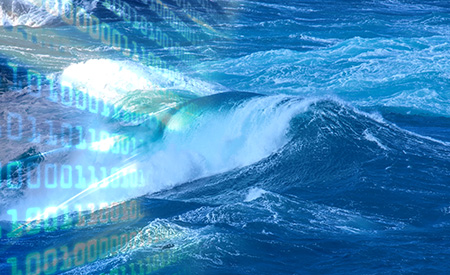Software
Type of resources
Available actions
Topics
Keywords
Contact for the resource
Provided by
Formats
status
-

This document is the first annual report on dissemination and communication activities regarding DTOceanPlus project.
-

This document collects the main guidelines, standards and procedures applicable to the implementation of the tools and modules in the DTOcean+ suite.
-

This report documents the outcome of the verification of the assessment design tools. The goal of the verification task was to ensure that the tools: respond correctly to a varied set of inputs; perform their functions in an acceptable time and reasonable use of computational resource; are adequate in terms of usability; and, are verified against control data. The following actions were completed for all tools as part of the verification and are described in detail in this report: definition of the verification cases and evaluation criteria; organisation of training sessions for partners; collection of data for each verification case; running the verification cases by partners; analysis of the results based on quantitative and qualitative assessments, creation of a task list of changes that could improve the tool and their performance.
-

This report is the outcome of a task dedicated to specific sector standards for business management models for the ocean energy sector. The aim of this task was to define alternative business models for the sector by developing a greater understanding of these models and recommending development routes to industrial roll-out to improving the market opportunity.
-

The aim of this document is to present the activity carried out by the four industrial partners who validated the DTOcean+ suite against five wave energy validation scenarios.
-

The Structured Innovation (SI) design tool forms part of the DTOceanPlus suite of second-generation open source design tools for ocean energy. The SI tool comprises innovation methodologies which can enhance concept creation and selection in ocean energy systems (including sub-systems, energy capture devices and arrays), enabling a structured approach to address complex ocean energy engineering challenges where design options are numerous, and thus it can facilitate efficient evolution from concept to commercialisation.
-

This document serves as the technical manual of the alpha version of the reliability, availability, maintainability and survivability module, including all the data requirements, main functions, interfaces and all the pertinent technical details.
-

This document summarises both the functionalities as well as the more technical aspects of the code implemented for this module. This module will provide the user with four assessments: identification of the potential presence of endangered species in the area; environmental impacts estimated using relevant metrics such as the underwater noise or the collision risk between vessels/devices and the marine wildlife; estimation of the carbon footprint of the project in terms of two mid-point indicators; information to improve the social acceptance of the project considering cost of consenting and jobs creation.
-

This report collates the materials used throughout the DTOceanPlus project on knowledge exchange and training.
-

This document is the third annual report on dissemination and communication activities regarding DTOceanPlus project.
 Catalogue PIGMA
Catalogue PIGMA